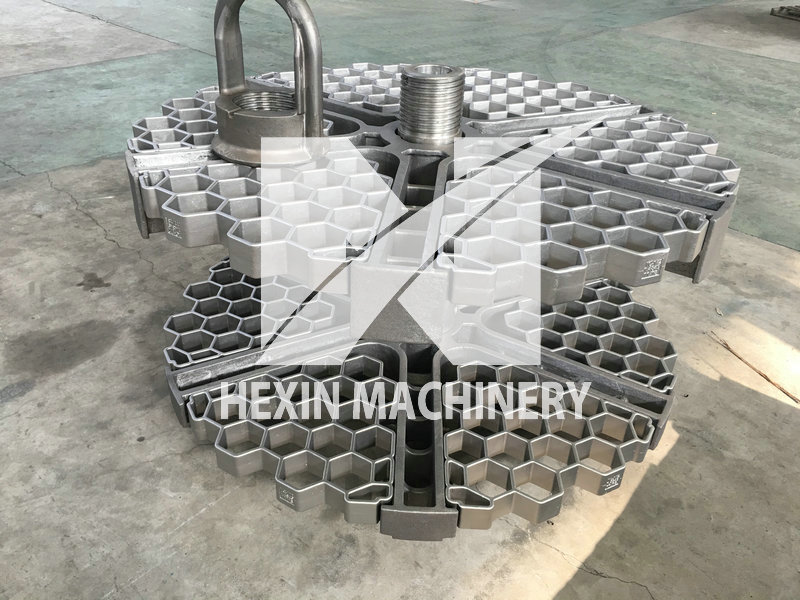
Heat-resistant steel fixtures for pit furnaces are equipped with: pit furnace hangers, pit furnace bases, honeycomb panels, round material trays, hooks, etc. Qingdao Hexin can design a pit furnace spreader with a diameter of three meters, and adopts a new assembled structure with a reasonable design. Easy installation and long service life. The main specifications of the pit furnace spreader that can be produced are: diameter 1200mm, 1600mm, 2000mm, 2500mm, 3000mm, etc.
Industrial electric furnaces can be divided into two categories according to the thermal system: one is the intermittent furnace, also known as the periodic furnace, which is characterized by the intermittent production of the furnace, and the furnace temperature changes during each heating cycle, such as chamber furnaces, Car furnace, pit furnace, etc.
Among them, the pit furnace is one of the important periodic operation furnaces in the industrial electric furnace. The heat-resistant steel fixtures for the pit furnace is suitable for the heat treatment of rods and long shaft parts. The furnace body of the pit furnace is a cylindrical deep well. The workpieces that need heat treatment are placed on the pit furnace hanger, and are vertically loaded into the furnace by a special crane for heating. The fuels used are usually gas and oil. When electricity is used as the heat source, it is called a pit type resistance furnace. Pit furnaces are generally placed below the ground level of the workshop, and some are placed above the ground level, or half above and below the ground level.
The section of the industrial furnace with vertical furnace for heat treatment of long rod-shaped workpieces is generally circular, with a diameter of 0.5 to 4.5 meters, and the deepest furnace can reach more than 30 meters. Pit furnace spreaders can be used for heat treatment of long rod-shaped workpieces, such as gun barrels, steam turbine main shafts, generator rotors, ship main shafts, etc. Bending deformation occurs. In order to facilitate the operation and reduce the height of the workshop, the furnace body is generally installed underground in whole or in part. When matched with the pit furnace, the same deep quenching cooling water tank and oil tank, as well as blowing or spray cooling devices should be built.
When the pit furnace spreader is used for quenching special long workpieces, the top of the workpiece that is first lifted out of the furnace is immersed in the coolant last, while the bottom of the last lifted workpiece is immersed first, and the workpiece is heated unevenly, which affects the quenching quality. . The usual measure is to control the upper and lower parts of the furnace to different temperatures. The heated workpiece is moved to the top of the oil tank or water tank together with the pit furnace spreader, and then the hoist on the top of the furnace is started to quickly immerse the workpiece and the spreader into the cooling tank. Internal cooling. The whole process of the workpiece from the furnace to entering the cooling tank and the time it stays in the air are very short, so there is less oxidation, small temperature drop, and the temperature drop speed of the upper and lower parts is basically the same, which can ensure the quality of quenching.
Pit furnaces can be heated with gas or liquid fuel, and can also be heated by electricity. When using gas fuel, there are usually several small-energy burners, which are installed along the tangential direction of the inner wall of the furnace, and are evenly arranged in layers or spirals in height to prevent the flame from directly scouring the workpiece and ensure uniform temperature in the furnace. When it is used for low temperature tempering or oil is used as fuel, a thin muffle wall is built in the furnace to separate the combustion space from the heating space, but the well-type furnace with muffle wall consumes more fuel.
Small pit furnaces mostly use electric heating, and most of them also have a special metal muffle tank, which can be used for gas carburizing, nitriding, carbonitriding, bright annealing and other heat treatments. In areas with sufficient power, or large pit furnaces that require precise control of furnace temperature, it is more suitable to use electric energy.

